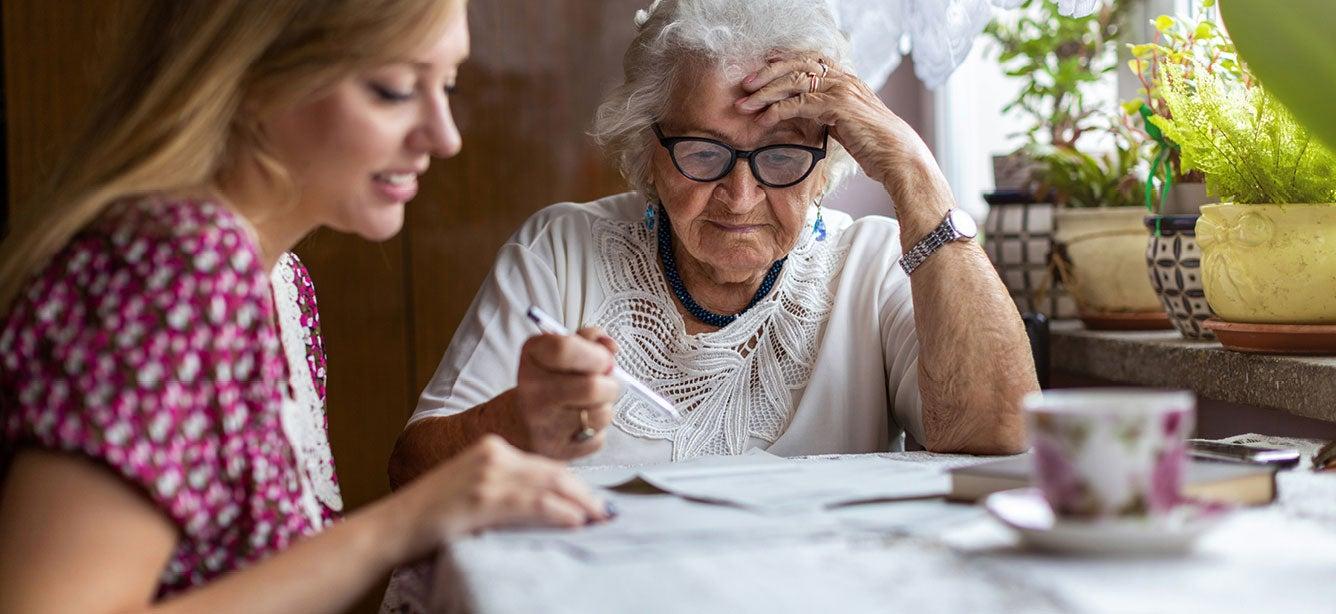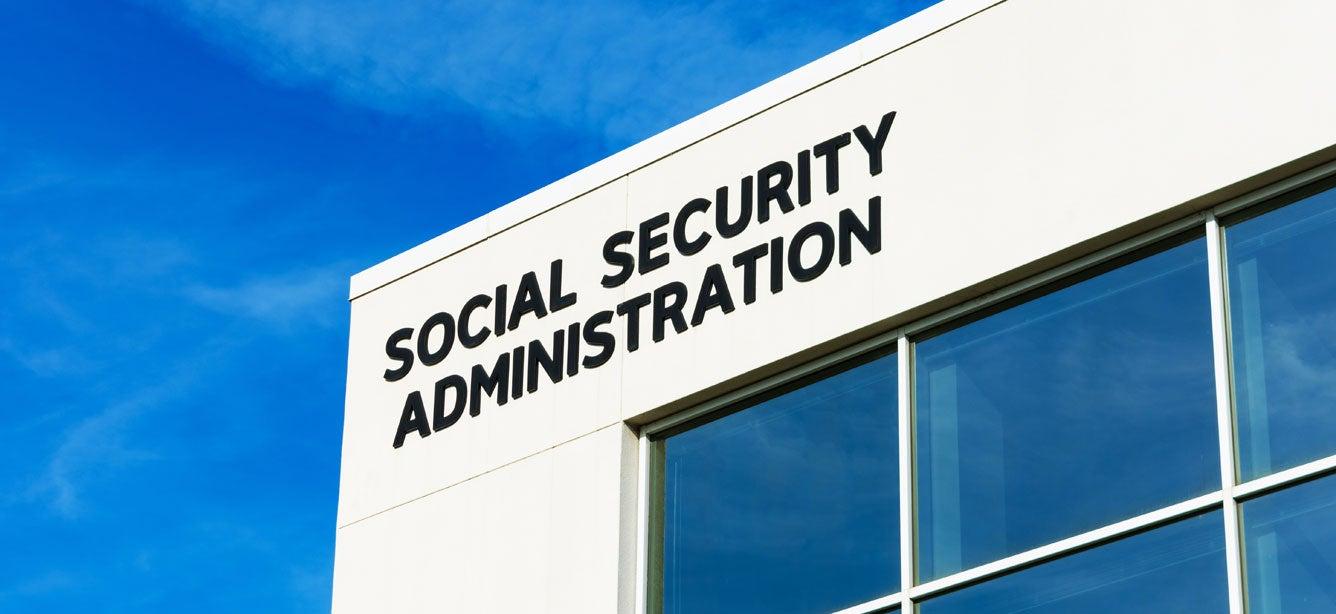What Counts as In-Kind Support for Supplemental Security Income (SSI)?
6 min read

Related Topics
If you’re receiving Supplemental Security Income (SSI), your monthly payment could be reduced if other people are helping to pay your housing and food costs. As of October 2023, the average monthly payout was $676.60, with adults age 65 or older receiving an average of $554.10 per month.1
That’s because the Social Security Administration (SSA), which runs the program, uses income and resources to help determine eligibility for SSI. The SSA defines income as “any item an individual receives in cash or in-kind that can be used to meet his or her need for food or shelter.”2 So, when someone pays for your rent, mortgage, food, and/or utilities, you are receiving "in-kind support and maintenance" (ISM).
What is considered in-kind support for SSI?
In addition to food that people may buy for you, ISM items include room, rent, mortgage payments, real property taxes, heating fuel, gas, electricity, water, sewerage, and garbage collection services.3
The SSA offers the following examples of what is considered in-kind support:
“For example, if an applicant or recipient lives with his brother and does not pay rent, we would consider the shelter that his brother provides as ISM. Similarly, if an applicant or recipient lives with a friend and consumes the food in her friend's home but does not contribute toward the food or rent, we consider the food and shelter that the friend provides as ISM. As another example, if an applicant or recipient lives alone but her parents bring her groceries each month and pay her utility bills, we consider her parents' help as ISM.”4
How does in-kind support affect my monthly SSI benefit?
ISM can reduce the full monthly federal benefit rate (FBR) by a maximum of one-third plus $20.4 The 2023 maximum monthly SSI benefit amount for an individual is $914 and $1,371 for an eligible person with an eligible spouse.5
SSI is only available to eligible adults age 65 and older and people of all ages with disabilities or blindness. (Most states add a cash supplement to federal SSI payment amounts. Read our story on SSI payments to learn more about benefits and other eligibility requirements.)
There are many facets to the SSI living arrangement rules. When you apply for benefits, an SSA representative will review your living situation and determine whether you’re receiving ISM.
How does the SSA decide the value of in-kind support?
The SSA uses two rules to determine the value of in-kind support:
1. The Value of the One-Third Reduction (VTR) Rule
This rule applies when a person or couple lives an entire month in someone else’s household and receives both food and shelter from others living there. Under this rule, the FBR is reduced by one-third.6
“When the value of the one-third reduction (VTR) applies, it applies in full or not at all. When the VTR applies, no additional in-kind support and maintenance is countable,” according to the SSA’s Program Operations Manual System (POMS) VTR page.6
Here’s an example:
“An eligible individual and his friend live in a house the friend owns. The friend buys all of the food for the household and pays all the shelter expenses except for electricity. The friend's mother pays the electric bill each month. Based on the eligible individual receiving both food and shelter from the household and not paying his pro rata share, he is subject to the VTR. Because the VTR applies, no additional ISM will count. Therefore, the electric bill paid by someone outside the household will not count as ISM.”6
Under the VTR rule, a person eligible for the full FBR of $914 would receive $609.34 after the one-third deduction ($304.66) is subtracted. A couple eligible for the full FBR of $1,371 would receive $914 after the one-third deduction ($457).
2. The Presumed Maximum Value (PMV) Rule
The SSA applies this rule applies when:4
- You live in your own household but receive help with food, shelter, or both
- You live in someone else's household, but only receive food or shelter (not both) from that household
- You live in a non-medical institution, such as an educational or vocational training institution
The SSA offers this example: “Lola lives with her minor daughter in an apartment. Lola's mother brings them groceries every week and pays two-thirds of Lola's rent. Although Lola receives assistance with both food and shelter, we assess the ISM Lola receives under the PMV rule, because she lives in her own household.”3
Under the PMV rule, the SSA says any food or shelter “is presumed to be worth a set maximum value,” which is one-third of the FBR plus $20.4
That means a person eligible for the full benefit of $914 would receive $589.34 after the one-third deduction and $20 ($324.66) are subtracted. A couple eligible for the FBR of $1,371 would receive $894 after the one-third deduction and $20 ($477) are subtracted.
These are simple illustrations of how VTR and PMV are calculated. They assume recipients are eligible for the full FBR. Actual SSI benefit calculations are much more complex and take many other factors into consideration.
What is not in-kind support?
As you can see, SSI living arrangement rules can have a big impact on the size of your monthly payment. It may be helpful to know that ISM does not apply when:2
- You live alone and pay for your own food and shelter
- You live only with your spouse and minor children and nobody outside the household pays for your food and shelter
- You live with other people and pay your share of the food and shelter expenses
Food you may receive from public sources like the Supplemental Nutrition Assistance Program (SNAP) is not counted as ISM.4
ISM food rules may be changing
The SSA has proposed a rule change that would exclude food purchases from ISM calculations.
If you need help paying for food and services like health care, medicine, and utilities, visit BenefitsCheckUp.org to find out if you’re eligible for SNAP and other programs. Our free, confidential tool helps connect older adults and people with disabilities to programs that may improve their quality of life.
Sources
1. Social Security Administration. Monthly Statistical Snapshot. October 2023. Found on the internet at https://www.ssa.gov/policy/docs/quickfacts/stat_snapshot/2023-10.pdf
2. Social Security Administration. Understanding Supplemental Security Income (SSI) Living Arrangements. 2022. Found on the internet at https://www.ssa.gov/ssi/text-living-ussi.htm
3. Social Security Administration. Code of Federal Regulations. In-Kind Support and Maintenance. Sept. 7, 2010. Found on the internet at https://www.ssa.gov/OP_Home/cfr20/416/416-1130.htm
4. Federal Register. Omitting Food from In-Kind Support and Maintenance Calculations. Feb. 15, 2023. Found on the internet at https://www.federalregister.gov/documents/2023/02/15/2023-02731/omitting-food-from-in-kind-support-and-maintenance-calculations
5. Social Security Administration. You May Be Able to Get Supplemental Security Income. January 2023. Found on the internet at https://www.ssa.gov/pubs/EN-05-11069.pdf
6. Social Security Administration. Program Operations Manual System (POMS). The One-Third Reduction Provision. Found on the internet at https://secure.ssa.gov/apps10/poms.nsf/lnx/0500835200
7. Social Security Administration. Program Operations Manual System (POMS). Presumed Maximum Value (PMV) Rule. Found on the internet at http://policy.ssa.gov/poms.nsf/lnx/0500835300




